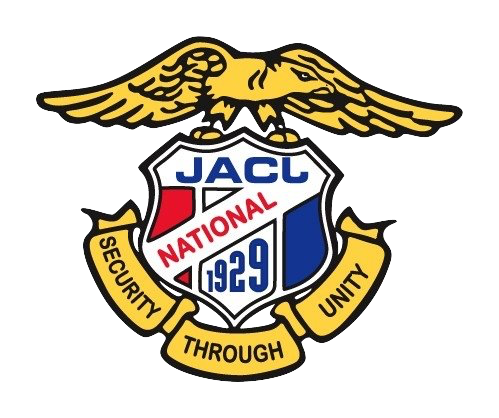JACL on 80 Years Since Executive Order 9066
February 18, 2022
For Immediate Release
Matthew Weisbly, Education & Communications Coordinator, mweisbly@jacl.org
Sarah Baker, VP Public Affairs, sbaker@jacl.org
80 years ago on February 19, 1942, President Franklin Delano Roosevelt signed Executive Order 9066 after growing pressure from the Department of War, Navy, and the general public in the wake of the bombing of Pearl Harbor and the United States’ entrance into World War II. The order, though never explicitly stating any racial or ethnic group, gave the Army and Navy the power to prescribe military zones within the United States and to exclude any and all persons deemed necessary. Today, we remember EO 9066 as the order that gave way to the forced removal and mass incarceration of 120,000 persons of Japanese ancestry. All without due process, trial, or even evidence.
This piece of paper and the subsequent events that followed forever changed the course of the Japanese American community. Those 120,000 people lost their livelihoods, their homes, countless personal belongings, millions of dollars in lost revenue and savings, and most of all their dignity. From living in modified horse stalls, whitewashed with mud, hair, and the lingering scent of manure, to the barren desert camps and tar-papered barracks where dust seeped into everything, the toilets and showers gave no privacy, and the machine guns were pointed inwards. It is hard to fathom the feelings and emotions all those who lived through this experience must have felt.
We saw our community torn apart when their loyalty was questioned even further by being forced to fill out the infamous “loyalty questionnaire.” It asked all incarcerees, regardless of age, gender, or citizenship if they would serve the United States on combat duty and if they would forswear any and all allegiance to the Emperor of Japan. Families, siblings, friends, loved ones, all were forced to take sides, and in many instances were torn apart by the decision to answer “yes, yes” or “no, no.” Both sides believed that in taking a stance they would be proving their loyalty and would be on the right side in the pages of history, and they were both correct.
On the one hand, there were the exploits of Japanese American service members who joined the fight against oppression and tyranny while their families were locked away back home. The members of the 442nd Regimental Combat Team, 100th Infantry Battalion, and Military Intelligence Service were not only the most highly decorated unit for their size and duration in all of US Military history but they were also credited with helping to shorten the war through their missions in Europe and the Pacific.
On the other, there were those whose resistance was their fight against tyranny from their own government. Whether it was all the way to the Supreme Court in the cases of Gordon Hirabayashi, Minoru Yasui, Fred Korematsu, and Mitsuye Endo. Or in the individual and collective resistance of those who were removed to Tule Lake segregation center, or those who resisted the draft and spent time in federal penitentiary. Or even those who’d faced enough humiliation and asked to be repatriated to Japan, a distant memory that some had never even seen before.
We also remember the generation after camp who, along with their parents and grandparents, fought to right the wrongs their country committed in the halls of Congress. When the Civil Liberties Act of 1988 was passed, it was a commitment from the government, finally acknowledging what our community had known all along, that we had done nothing wrong and that the incarceration had been caused by, “war hysteria, racial prejudice, and a failure of political leadership.” While it would never make up for the monetary losses and the years of trauma, the redress era put our community and our nation on a path of healing and using the story of the incarceration to make change today.
So here we stand, 80 years later, in remembrance of the event that forever changed our community. But we also celebrate achievements that have come in its aftermath, such as the recent passage of the Amache National Historic Site Act to bring Amache into the National Parks Service. Yet, we also look forward to new challenges, such as supporting the African American community in their campaign for redress that too is long overdue. This year, we should remember all of this history in order to work better as a nation to make a change and to continue righting wrongs for other communities who are victimized by injustice and bigotry.
###
The Japanese American Citizens League is a national organization whose ongoing mission is to secure and maintain the civil rights of Japanese Americans and all others who are victimized by injustice and bigotry. The leaders and members of the JACL also work to promote cultural, educational, and social values and preserve the heritage and legacy of the Japanese American community.
